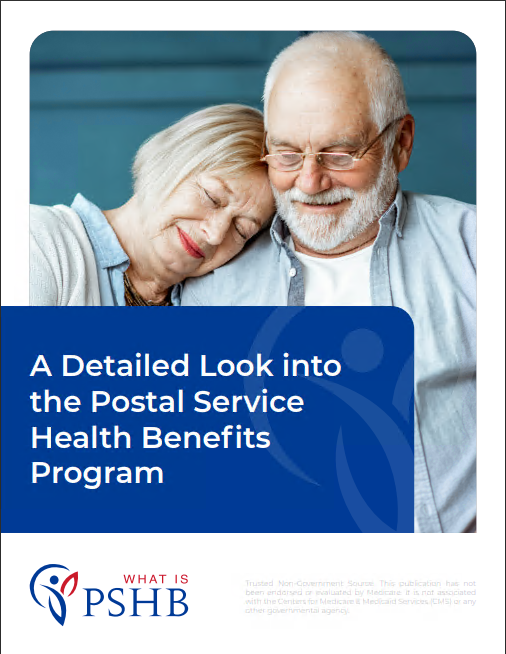Key Takeaways:
- Postal workers must carefully evaluate their health benefit options to avoid costly mistakes when transitioning to the Postal Service Health Benefits (PSHB) program in 2025.
- Understanding the changes in health coverage for postal workers in 2025 is essential to making informed decisions and securing the best health benefits.
Common Mistakes Postal Workers Make When Choosing Health Benefits for 2025 and How to Avoid Them
As 2025 approaches, postal workers across the United States are facing significant changes to their health benefits. With the introduction of the Postal Service Health Benefits (PSHB) program, it is crucial for employees to make informed decisions to ensure they secure the best coverage for themselves and their families. However, navigating these changes can be daunting, and many postal workers are at risk of making costly mistakes. This article explores the common pitfalls and provides practical tips on how to avoid them.
Not Understanding the PSHB Transition
One of the most critical mistakes postal workers can make is not fully understanding the transition to the Postal Service Health Benefits (PSHB) program, set to begin in January 2025. The PSHB program was established under the Postal Service Reform Act of 2022, and it represents a significant shift from the Federal Employees Health Benefits (FEHB) program that postal workers have traditionally used. Unlike FEHB, the PSHB is exclusively for postal employees, and it is vital to understand how this new program differs from the previous system.
Key Differences Between PSHB and FEHB
The PSHB program will offer similar benefits to FEHB, but there are important distinctions. For instance, postal workers will no longer have access to the same range of plans available under FEHB. Instead, they will need to choose from a set of PSHB-specific plans. Additionally, retirees who are eligible for Medicare must enroll in Medicare Part B to maintain their PSHB coverage. Failing to understand these nuances could result in postal workers choosing inadequate or overly expensive coverage.
How to Avoid This Mistake
To avoid confusion, postal workers should start by thoroughly reviewing the official PSHB guidelines provided by the U.S. Office of Personnel Management (OPM) and the Postal Service. Attending informational sessions, reading official communications, and consulting with human resources or a licensed insurance agent can also help clarify the changes and their implications.
Ignoring the Importance of Medicare Integration
For postal workers approaching retirement, integrating Medicare with their PSHB benefits is a critical step. As of 2025, postal retirees who are eligible for Medicare will be required to enroll in Medicare Part B to maintain their PSHB coverage. Unfortunately, some postal workers may overlook this requirement, leading to lapses in coverage or higher out-of-pocket costs.
Why Medicare Integration Matters
Medicare Part B covers outpatient services, which complement the coverage provided by PSHB plans. Without enrolling in Part B, retirees may find themselves without sufficient coverage for essential medical services, and they could face late enrollment penalties if they delay their Part B enrollment.
How to Avoid This Mistake
To avoid issues, postal workers should ensure they understand their Medicare eligibility and the deadlines for enrolling in Part B. It’s advisable to start planning for Medicare integration at least a year before retirement. Workers can use online tools or consult with a licensed insurance agent specializing in Medicare to explore the best options for integrating PSHB with Medicare.
Choosing a Plan Based Solely on Premium Costs
A common mistake among postal workers is selecting a health plan based solely on the premium cost without considering other factors such as coverage, out-of-pocket expenses, and provider networks. While a lower premium may seem attractive, it may not always provide the best value.
The Risks of Low-Premium Plans
Low-premium plans often come with higher deductibles, copayments, and more limited provider networks. Postal workers who require regular medical care or have chronic conditions may end up paying more out-of-pocket with a low-premium plan. Additionally, such plans might not cover preferred doctors or specialists, leading to additional costs or the inconvenience of switching providers.
How to Avoid This Mistake
Postal workers should conduct a thorough cost-benefit analysis when selecting a health plan. This includes evaluating not just the monthly premium but also the deductible, copayments, coinsurance, and out-of-pocket maximums. Workers should also ensure that their preferred healthcare providers are within the plan’s network. Tools such as the OPM’s comparison tool or calculators offered by licensed insurance agents can assist in making an informed decision.
Overlooking Dental and Vision Coverage
Another common oversight is neglecting dental and vision coverage when choosing a health plan. While these benefits are often optional, they are crucial for overall health and can prevent costly medical issues down the road.
The Importance of Comprehensive Coverage
Dental and vision care are integral to maintaining long-term health, particularly as one ages. For instance, routine dental visits can prevent serious issues like gum disease, which has been linked to other health problems such as heart disease. Similarly, regular eye exams can detect early signs of conditions like glaucoma or diabetes.
How to Avoid This Mistake
Postal workers should consider their dental and vision needs when selecting a health plan. If these benefits are not included in the primary health plan, it may be worthwhile to purchase a supplemental plan that covers dental and vision care. Comparing the costs of these plans against potential out-of-pocket expenses for dental and vision services can help determine if additional coverage is necessary.
Failing to Reassess Health Coverage Annually
Another mistake postal workers often make is sticking with the same health plan year after year without reassessing their needs. Life circumstances, health conditions, and available plans can change, making it essential to review and possibly update health coverage annually.
The Risks of Inaction
Staying in a plan that no longer meets your needs can lead to inadequate coverage or unnecessary expenses. For instance, if a postal worker’s health needs have changed significantly, their current plan may not cover the services they require, or they may be paying for coverage they no longer need.
How to Avoid This Mistake
To ensure optimal coverage, postal workers should review their health plan options during each open season. This includes considering any changes to their health, family situation, or the plans available under PSHB. Utilizing resources like plan comparison tools, and consulting with human resources, or a licensed insurance agent can help identify the best plan each year.
Misunderstanding Family Coverage Options
Postal workers who need to cover their families can make mistakes by not fully understanding the family coverage options under PSHB. For example, failing to account for the health needs of all family members or choosing a plan that doesn’t cover dependent children adequately can lead to significant issues.
Understanding Dependent Coverage
Under PSHB, postal workers can choose from self-only, self-plus-one, or self-and-family plans. Each option has different implications for coverage and costs. It’s crucial to consider the specific needs of each family member, including any special health requirements, when selecting a plan.
How to Avoid This Mistake
When evaluating family coverage options, postal workers should take stock of each family member’s health needs. This includes considering any anticipated medical treatments, prescription medications, and whether preferred providers are in-network for all family members. If uncertain, seeking advice from a licensed insurance agent or using family coverage comparison tools can be beneficial.
Not Considering Future Health Needs
Lastly, a significant mistake is failing to consider future health needs when selecting a health plan. While it’s impossible to predict every health issue, not planning for potential future needs can result in inadequate coverage or higher costs down the line.
The Importance of Planning Ahead
Health needs often change with age, and certain medical conditions can develop unexpectedly. Selecting a plan that offers comprehensive coverage for a range of medical services, including those that may not be immediately necessary, can provide peace of mind and financial protection.
How to Avoid This Mistake
Postal workers should consider their family’s health history, current medical conditions, and potential future needs when selecting a plan. Opting for a plan that offers robust coverage, even if it comes at a higher premium, may be more cost-effective in the long run. Workers should also consider plans that offer flexibility in coverage options, allowing for adjustments as needs change.
Making Informed Decisions for 2025
As postal workers transition to the new PSHB program in 2025, making informed decisions about health benefits is more important than ever. By understanding the key differences between PSHB and FEHB, integrating Medicare, evaluating plan options thoroughly, and planning for the future, postal workers can avoid common mistakes and secure the best possible coverage for themselves and their families.
Contact Information:
Email: [email protected]
Phone: 3035559012







